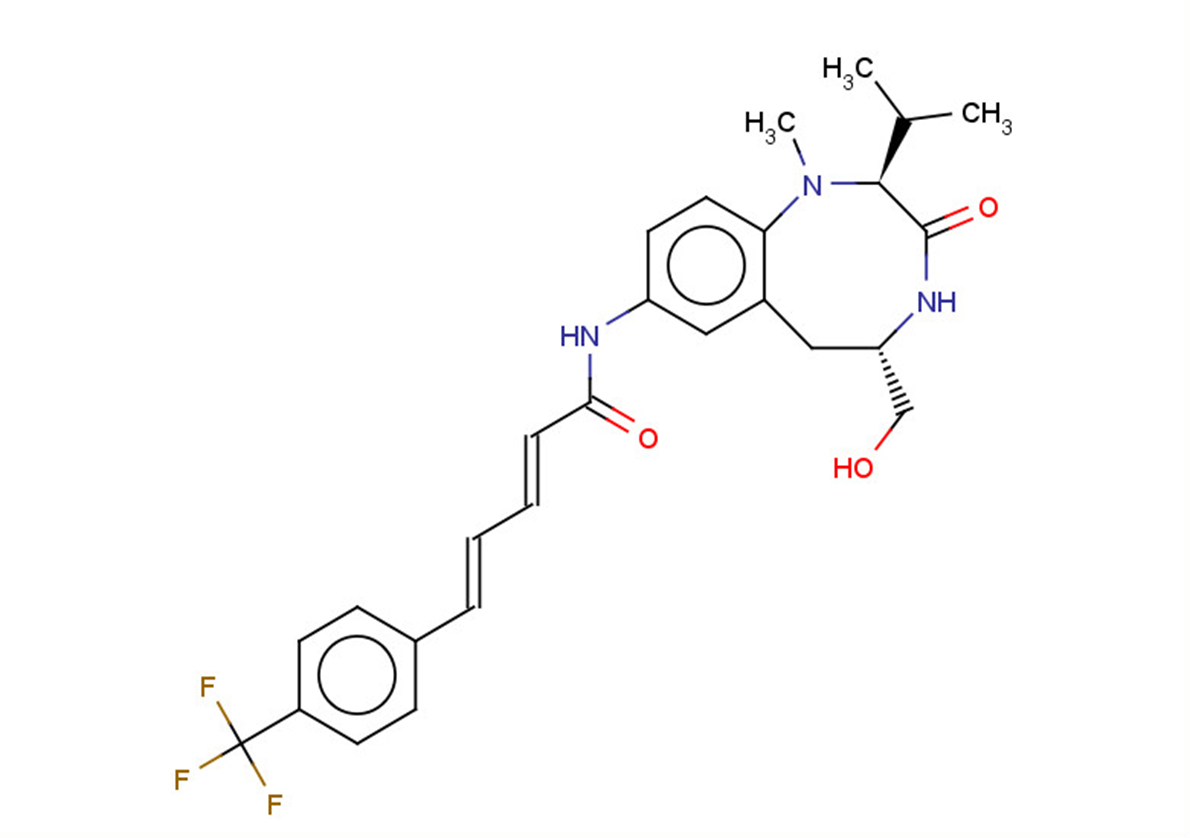
TPPB
CAS No. 497259-23-1
TPPB( —— )
Catalog No. M24458 CAS No. 497259-23-1
TPPB is a kinase C activator of cell-permeable benzolactam-derived protein (Ki: 11.9 nM).
Purity : >98% (HPLC)
 COA
COA
 Datasheet
Datasheet
 HNMR
HNMR
 HPLC
HPLC
 MSDS
MSDS
 Handing Instructions
Handing Instructions
| Size | Price / USD | Stock | Quantity |
| 5MG | 492 | In Stock |


|
| 10MG | 745 | In Stock |


|
| 25MG | 1107 | In Stock |


|
| 100MG | Get Quote | In Stock |


|
| 200MG | Get Quote | In Stock |


|
| 500MG | Get Quote | In Stock |


|
| 1G | Get Quote | In Stock |


|
Biological Information
-
Product NameTPPB
-
NoteResearch use only, not for human use.
-
Brief DescriptionTPPB is a kinase C activator of cell-permeable benzolactam-derived protein (Ki: 11.9 nM).
-
DescriptionTPPB is a kinase C activator of cell-permeable benzolactam-derived protein (Ki: 11.9 nM).
-
In Vitro——
-
In Vivo——
-
Synonyms——
-
PathwayAngiogenesis
-
TargetPKC
-
RecptorPKC
-
Research Area——
-
Indication——
Chemical Information
-
CAS Number497259-23-1
-
Formula Weight501.54
-
Molecular FormulaC27H30F3N3O3
-
Purity>98% (HPLC)
-
SolubilityDMSO:125 mg/mL (249.23 mM; Need ultrasonic)
-
SMILESCC(C)[C@@H](C(N[C@H](CO)C1)=O)N(C)c(cc2)c1cc2NC(/C=C/C=C/c1ccc(C(F)(F)F)cc1)=O
-
Chemical Name——
Shipping & Storage Information
-
Storage(-20℃)
-
ShippingWith Ice Pack
-
Stability≥ 2 years
Reference
1.Kozikowski AP, et al. New amide-bearing benzolactam-based protein kinase C modulators induce enhanced secretion of the amyloid precursor protein metabolite sAPPalpha. J Med Chem. 2003 Jan 30;46(3):364-73.
molnova catalog



related products
-
Rottlerin
Rottlerin (Mallotoxin;NSC 94525) is a polyphenol natural product, cell-permeable and reversible PKC inhibitor that exhibits greater selectivity for PKCδ (IC50=3-6 uM) and PKCθ.
-
UCN-01
UCN-01 (7-Hydroxystaurosporine;NSC 638850) is a synthetic derivative of staurosporine that has antiproliferative activity against several in vitro and in vivo cancer models.
-
Psychosine
Psychosine (Galactosylsphingosine) is a PKC inhibitor, a substrate for the enzyme galactosylceramide cerebrosidase (GALC), and a potential biomarker of Krabbe's disease.



 Cart
Cart
 sales@molnova.com
sales@molnova.com


